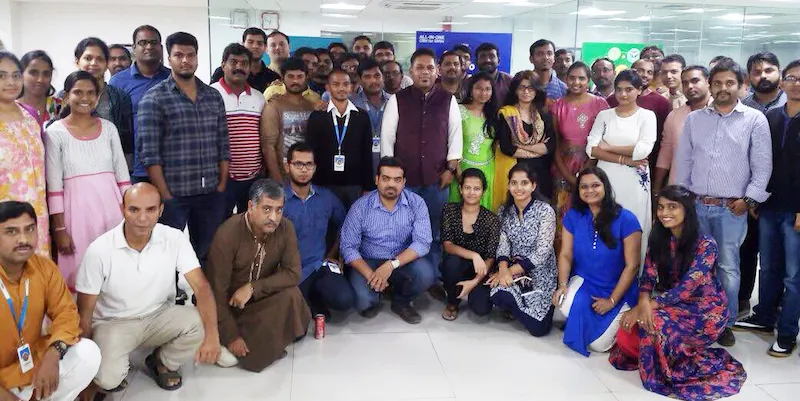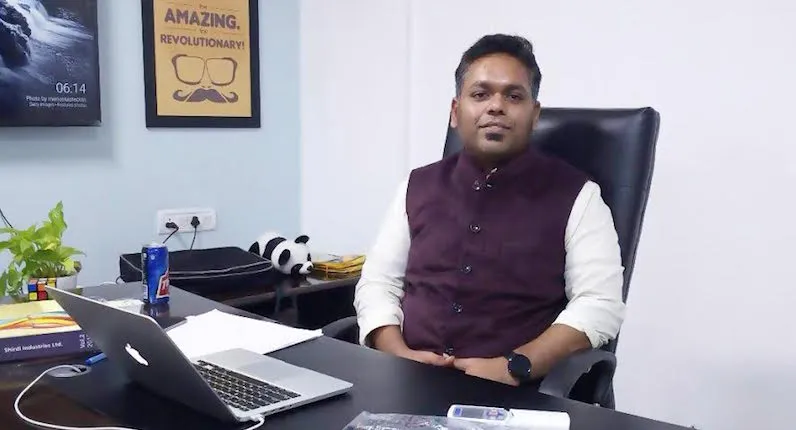[Bootstrap Heroes] How to reach $3mn in revenue and amass 9K customers sans any funding — the story of Agile CRM
Encounters with pain points often lead to meaningful and innovative solutions. Many a time, entrepreneurs working on a certain kind of problem discover much bigger issues during the course of their work, and Manohar Chapalamadugu is a perfect example of this. While scaling up ClickDesk — an online live chat and support software to boost conversion for businesses — Manohar realised that the need of the hour was to keep leads and customers engaged at every stage in the user lifecycle, from capture and conversions to onboarding and retention.

After immense research, he found this to be a big problem with small and medium-sized businesses (SMBs). “This problem triggered me to lay the foundation of Agile CRM,” says Manohar.
The humble beginning
At the time Agile was launched (September 2013), there were not many solutions which could manage end-to-end customer engagement. Businesses were facing challenges such as data leaks, inconsistent messaging between different customer-facing teams (sales, marketing, and customer support), integrating and managing multiple solutions, et al.
Manohar, while growing ClickDesk, identified this as a big gap and came up with the idea of an all-in-one CRM. Agile claims to be just this kind of CRM, with sales, market, and service automation functions, offering a suite of out-of the box integrations and features designed to support the entire customer lifecycle for SMBs. “Agile CRM was built specifically for SMBs, to allow them to sell, market, and service like the Fortune 500 companies,” outlines Manohar.
During the initial days, Manohar and the core team wanted to tackle sales and marketing aggressively, but soon realised that the product and gaining customers’ confidence had to be given top priority. “For the first year we focused on taking feedback from customers and building up a product they would really use,” reminisces Manohar.
Indian SaaS startups don’t need US offices
Once the market validation was done, the company started scaling sales and marketing. “During our initial stage, we were advised to open an office in the US as it was assumed that that was where all the action was, but we decided to run all the operations from India and first focus on the product and then plan on global offices,” says Manohar.
Manohar is an alumnus of Birla Institute of Technology and Science, Pilani, and State University of New York. He has over 10 years of experience working with startups and multinationals.
After two-and-a-half years of operation, Agile CRM has recently opened an office in Dallas (Texas) essentially to focus on market expansion and customer service.
Growing from zero to $3 million revenue in just three years
Agile CRM has witnessed exponential growth in the last three years. “By the end of its first year of operations, it had crossed the revenue figure of $1 million and as the second year concluded, we had crossed a revenue of $3 million,” adds Manohar.

The company aspires to touch $10 million revenue by the end of this year. Currently, it has about 9,000 customers primarily in the US and western countries. Manohar says,
The Indian SaaS ecosystem hasn’t yet built up. The majority of our customers are outside India. A total of five–seven percent of its current base are from India, while the rest of the world accounts for the others.
The CRM and allied technology space is very crowded, with different tools solving parts of the problem, but not the entire thing. Very few solutions have actually come out with all-in-one approaches addressing the needs of the market, and the ones which do exist are either bulky or costly to adopt. “This is where Agile CRM stands out. We give CRM with marketing and service automation capabilities,” adds Manohar.
Advantage of bootstrapping: pitching customers instead of investors
With bootstrapping, you pitch to your customers instead of investors. “This is a big change in approach. This daily engagement and interchange enables bolder innovation, from the app to the marketplace and so on and so forth,” adds Manohar.
Bootstrapping helps you make the right choices. Having a smaller amount of cash on hand also demands a certain discipline and focus. Manohar says,
With so much focus on investments and valuation, bootstrapping is a blessing in disguise. When you bootstrap, you face a lot of challenges like where to invest, what to focus on, etc., but overcoming them and then still achieving aggressive milestones teaches you to take the right decisions.
While SaaS-based solutions haven’t been widely adopted in India, Manohar sees this changing in coming years. He concludes,
Thanks to the widespread adoption of cloud computing in India, SaaS companies are set to boom in the country, especially in the B2B space. A few years ago the focus was on the B2C space, but things are very different now.


![[Bootstrap Heroes] How to reach $3mn in revenue and amass 9K customers sans any funding — the story of Agile CRM](https://images.yourstory.com/cs/wordpress/2016/09/Team-Agile-CRM.png?mode=crop&crop=faces&ar=16%3A9&format=auto&w=1920&q=75)




